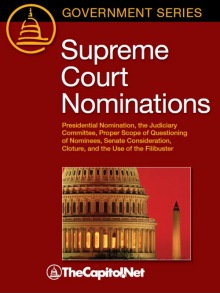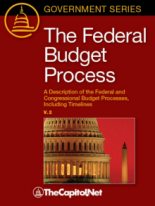Filibuster, Cloture, Presidential Nominations, Article II Section 2 – CRS Reports
U.S. Constitution, Article II, Section 2 “Voting and Quorum Procedures in the Senate,” CRS Report 96-452 (17-page PDF) “Procedures for Considering Changes in Senate Rules,” CRS Report R42929 (21-page PDF) “Proposals to Change the Operation of Cloture in the Senate,” CRS Report R41342 (26-page PDF) “Proposals to Reform ‘Holds’ in the Senate,” CRS Report RL31685 … Read more



